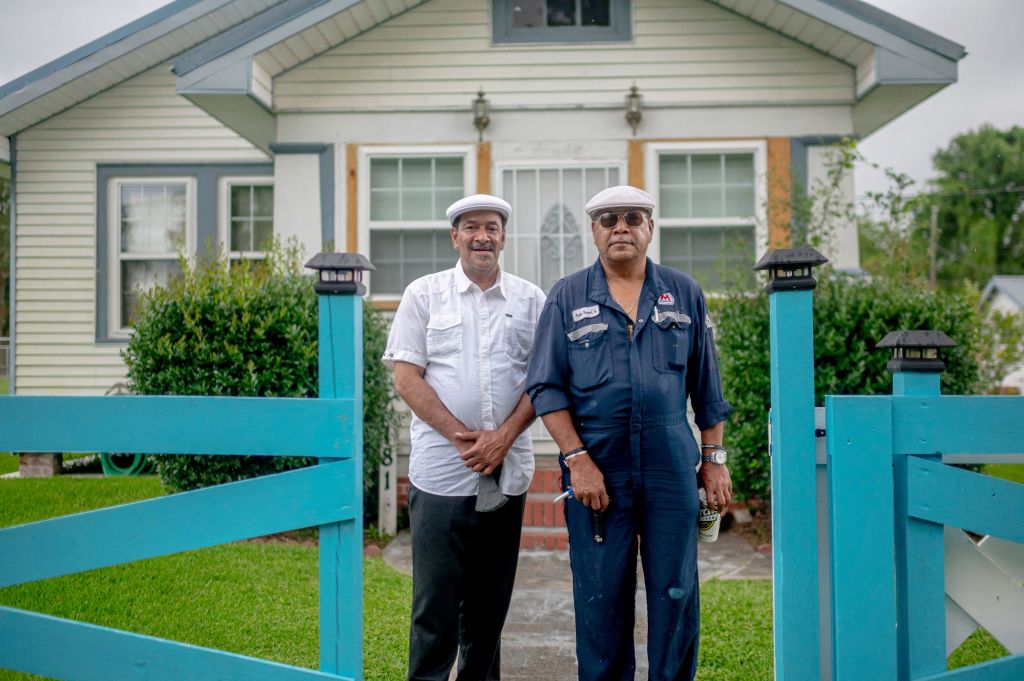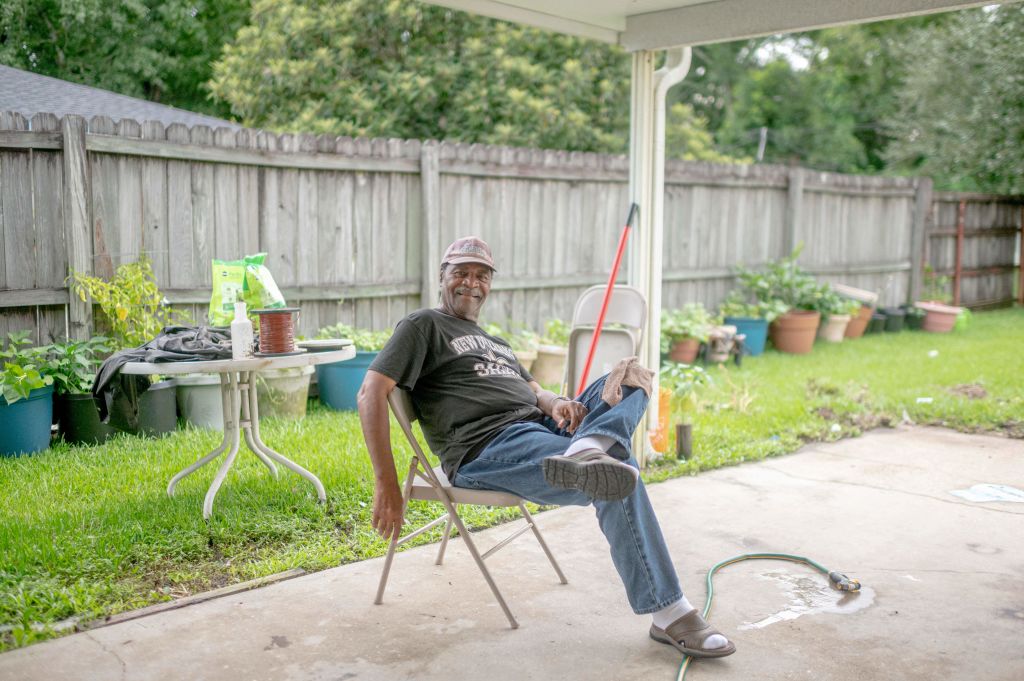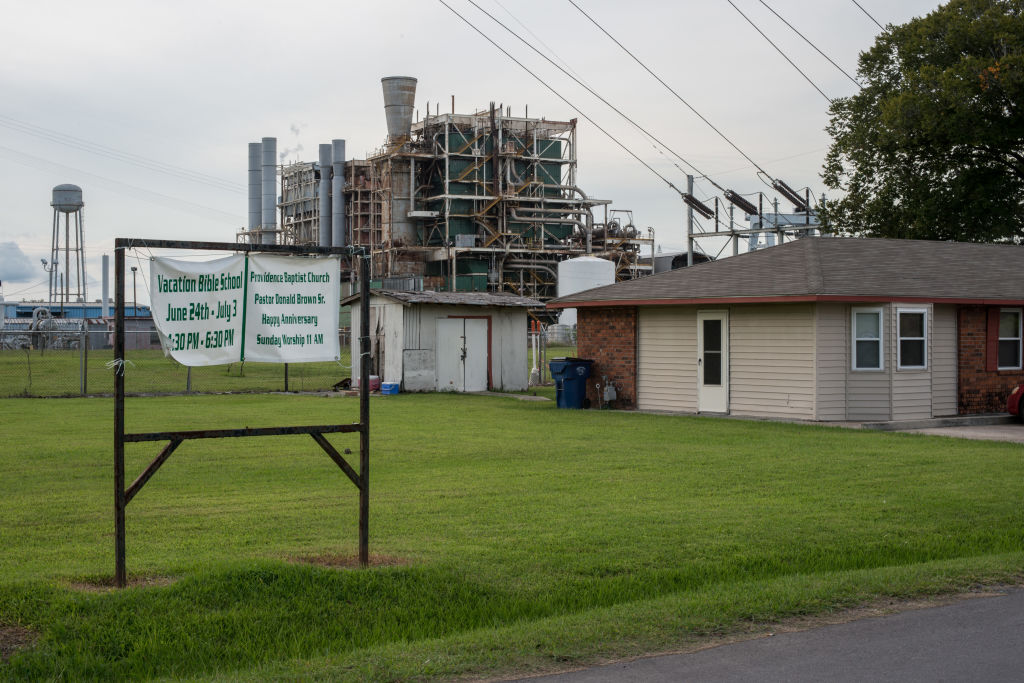Environmental racism—defined as racial disparities in environmental risks from exposure to any toxin or from climate change—is all too common in the United States. Blacks in Louisiana have lived—and died—this truism arguably since Emancipation.
But the 20,000 people of southeastern Louisiana living in Cancer Alley have had enough.
To drive the point home, in 2022, activists from the group RISE St. James staged a funeral procession to the White House to urge President Biden to protect them from the deadly scourge of fossil fuels and the plethora of toxic petrochemicals derived from them. More specifically, they demanded an end to dirty energy projects and a climate emergency declaration which would free up funds to rectify the environmental harms disproportionately experienced by Black residents of coastal Louisiana.
Find out here the latest in the continuing saga of Cancer Alley vs the fossil fuel industry.

What is Cancer Alley?
Unbelievably, there are more than 200 fossil fuel facilities and chemical plants along the 85-mile stretch of the Mississippi River between Baton Rouge and New Orleans frequently called Cancer Alley. Everything from oil refineries to plastics factories spew tons of airborne toxins and greenhouse gases every day into the lungs of the Black residents who call this part of Louisiana home. This is reportedly the largest concentration of the fossil fuel industry in the Western Hemisphere.
It is no surprise that people living in this area have a 95% greater chance of developing cancer compared to other Americans.
In 2022, the United Nations Special Rapporteur David R. Boyd declared Cancer Alley one of several global sacrifice zones, a place so polluted and hazardous it is incomprehensible that a government would allow its citizens to live there. “The continued existence of sacrifice zones is a stain upon the collective conscience of humanity,” representing “the worst imaginable dereliction of a State’s obligation to respect, protect and fulfill the right to a clean, healthy and sustainable environment,” stated Mr. Boyd.
As the sign in Sharon Lavigne’s—the founder of RISE St. James—yard proclaims: “We live on death row.” To learn more about the plight of Cancer Alley victims, this short video by Human Rights Watch spells it all out plainly. Especially noteworthy is the fact that pollution exposure is associated with preterm and low birth weights which in turn often lead to a life of chronic health problems such as asthma.

Ethylene oxide in Cancer Alley
One of the major cancer-causing chemicals threatening the health of local residents is ethylene oxide (EO). The major route of exposure is by inhalation which may result in seizures, vomiting, or difficulty breathing.
Linked to breast and lymphatic cancers, the amount of EO in Cancer Alley air has been grossly underestimated by the Environmental Protection Agency (EPA) and state agencies. An independent study published in 2024 found that there is, on average, almost three times the benchmark level, set by the EPA, that would raise the risk of developing cancer by 1 in 10,000 people if they breathed it in on a daily basis. According to the EPA, that threshold level is 11 ppt (parts per trillion). In some spots, EO measured ten times that level.
At the facility fenceline, EO levels ranged in parts per billion (ppb)—an order of magnitude one thousand times greater than measurements taken farther away. In other words, workers in the plant are exposed to dangerously high levels.
“From over two decades of doing these measurements, we’ve always found that the measured concentrations of pretty much every pollutant is higher than what we expect. In the case of ethylene oxide, this is particularly important because of the health risks associated with it at such low levels,” reported study author Peter DeCarlo.
Interestingly, the EPA concluded—eight years earlier—that EO is “60 times more toxic to children and 30 times more toxic to adults than the previous estimate,” but took no action until years later.
Fortunately, due in part to public outcry, the EPA announced a rule in April 2024 ordering chemical plants producing EO to lower released levels of the carcinogen and monitor them more effectively and publicly. The rule will take effect in two years and cost the corporations less than 1% of their annual sales.
“Today marks a victory in the pursuit for environmental justice, with the final rule poised to significantly reduce the toxic air pollution that harms communities in Texas’s Gulf Coast, Louisiana’s Cancer Alley, and throughout the U.S.,” said Earthjustice Vice President for Healthy Communities Patrice Simms.

Formosa Plastics in Cancer Alley
RISE St. James has been embroiled in recent years in plans to build a massive Formosa Plastics factory on 2,400 acres near their homes. This time, they have the force of a 2021 report by the nonprofit Institute for Energy Economics and Financial Analysis detailing why the project is not economically viable.
In Baton Rouge, Formosa’s plastics plant stands in repeated violation of the Clean Air Act, and RISE St. James doesn’t want the same in their neighborhood. Nor does it want the likely tripling of toxic air contaminants and the greenhouse gas emissions of multiple coal-fired power plants.
In 2022, a district judge blocked the air quality permits for the project. But in 2024, a federal court reversed that decision.
At the time of writing, the Formosa plant remains in litigious limbo.
Racist land use lawsuit in Cancer Alley
Continuing their fight for environmental justice, several groups in parishes throughout Cancer Alley presented arguments to a federal appeals court in October 2024 to go before a trial to win their case and overturn a lower court ruling. The groups claim that industrial plants are built only in Black neighborhoods because local land-use policies are racist.
The suit, initially filed in March 2023, centered on claims that the parish had blocked access to ancestral grave sites once they granted building permits and sold land to the fossil fuel and petrochemical industries.
“We’re hoping that they will see the way we see it—that the Civil War has never been over,” said Gail LeBoeuf, co-founder and co-executive director of the activist group Inclusive Louisiana.
Asserting that local government has been involved in systemic racial cleansing as a vestige of slavery, the suit claims that the parish “granted every single request by heavy industrial corporations to locate their facilities in majority Black districts in the Parish while rejecting requests to locate them in white districts.”
The groups also demanded for a moratorium on all new fossil fuel and petrochemical plants in their neighborhoods.
